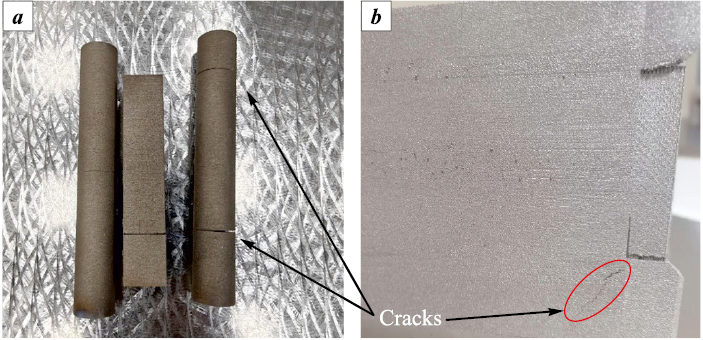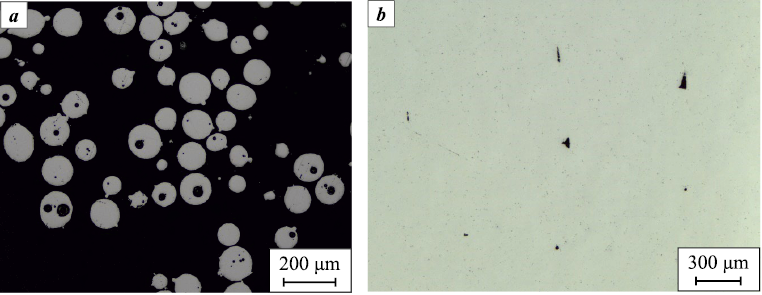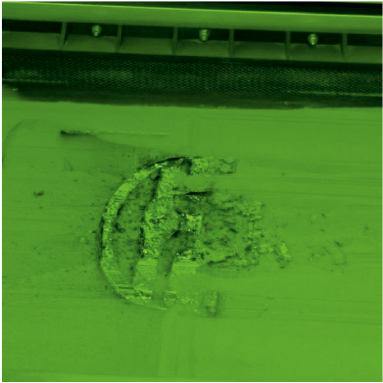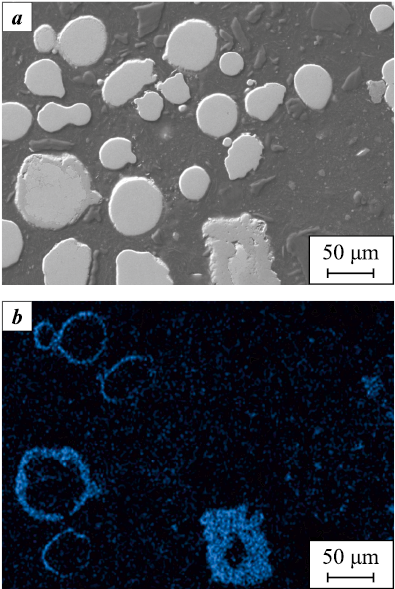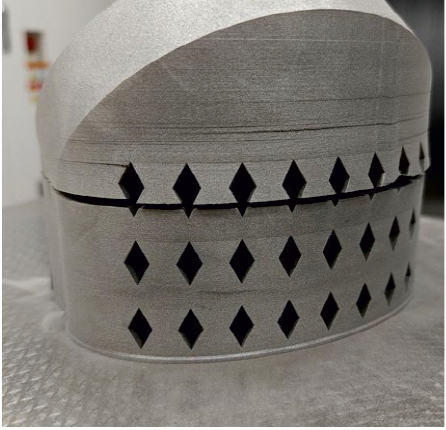Scroll to:
Challenges in using powder feedstock for laser powder bed fusion
https://doi.org/10.17073/1997-308X-2025-4-91-99
Abstract
This paper reviews the main methods for producing and assessing the quality of powder feedstock intended for use in laser powder bed fusion (LPBF). The LPBF process involves the layer-by-layer laser fusion of powder feedstock on the surface of a build plate in accordance with a 3D model. The study examined powder feedstock produced domestically from industrial alloys based on nickel (Inconel 718, EP741NP, AZhK), titanium (VT6, VT6s, VT20), and iron (12Kh18N10T, Fe–Cr–Ni–Co–Mo system). The principal production methods considered are gas atomization, the Plasma Rotating Electrode Process (PREP), and plasma atomization in an inert gas atmosphere, with their respective advantages and limitations described. The most common defects in powder feedstock arising during production and use in LPBF are analyzed, including non-conforming particle size distribution, internal porosity, satellites, changes in bulk density and flowability, fine black particles, increased gaseous impurities, and non-conforming chemical composition. Measures for mitigating these defects and maintaining product quality are proposed. The findings show that achieving stable LPBF results requires regular quality control of powder feedstock to ensure compliance with the requirements specified in applicable standards, including particle size distribution (distribution quantiles d10 , d50 , and d90 ), processing characteristics, particle morphology, chemical composition, and moisture content. For certain alloys, when defects occur systematically and cannot be effectively eliminated through process adjustments or post-processing, the most appropriate solution is to change the powder production method.
Keywords
For citations:
Baskov F.A., Logacheva A.I., Logachev I.A., Timofeev A.N. Challenges in using powder feedstock for laser powder bed fusion. Powder Metallurgy аnd Functional Coatings (Izvestiya Vuzov. Poroshkovaya Metallurgiya i Funktsional'nye Pokrytiya). 2025;19(4):91-99. https://doi.org/10.17073/1997-308X-2025-4-91-99
Introduction
The continuous development of powder metallurgy has led to the emergence of a modern method for producing components – additive manufacturing (AM). This technology encompasses techniques for the layer-by-layer fusion or deposition of powder or wire feedstock using high-energy sources such as lasers, electron beams, or electric arcs. The material is fused layer by layer in accordance with a 3D model [1].
The most widely employed AM process is laser powder bed fusion (LPBF), or selective laser melting (SLM), in which layers of powder are selectively fused by a laser on the surface of a build plate (also referred to as the substrate). The production of a component by LPBF typically involves the following stages:
– preparation of the 3D model (slicing, generation of support structures, positioning of the part on the build plate, and setting the LPBF process parameters);
– preparation of the equipment (cleaning, installation of the build plate, and uploading the prepared model file to the control unit);
– execution of the LPBF process;
– removal of the build plate with the fabricated part;
– post-processing of the part (mechanical processing, thermal treatment, and hot isostatic pressing).
Each stage of the process requires close control, as any deviation from the prescribed parameters may adversely affect the quality of the final component [2].
In addition to the stability of the equipment and software, the key factors influencing the quality of the end product include the properties of the powders, the LPBF process parameters, and the precision of the part geometry.
Powder feedstock – referred to in Russian standards as a metal powder composition (MPC) – is defined in GOST R 59035-2020 as a metallic powder formulated as a single composition for use in AM. At both the production stage of the MPC and during the use of powder feedstock in layer-by-layer synthesis, it is essential to control parameters such as particle morphology, particle size distribution, chemical composition, processing characteristics (apparent density and flowability), defects (internal – gas porosity; external – satellites), and moisture content. Any non-conformity of the powder feedstock with the specified requirements can result in diminished quality of the finished product [3–6].
A correctly selected LPBF mode – representing the combination of process parameters – is one of the key factors determining the final result, including the mechanical properties of the part and its compliance with the dimensions specified in the design documentation. For this reason, LPBF parameters are developed for each alloy, and dimensional optimization is carried out for each part. Both of these stages are labor-intensive and are implemented iteratively, with intermediate results followed by adjustments to the process parameters.
The final stage in producing the target component is comprehensive post-processing, involving the selection of the necessary mechanical and thermal operations. At this stage, the part is separated from the build plate, support structures and any residual powder feedstock are removed from its surface and internal channels, and machining is performed to achieve the dimensions specified in the design documentation. Thermal treatment and hot isostatic pressing are used to relieve residual thermal stresses, reduce and/or eliminate characteristic structural defects (such as pores and cracks), and form a microstructure that ensures optimal properties, for example through the precipitation of strengthening phases. The sequence of technological operations is determined individually for each alloy and part type [7–10].
According to the Order of the State Corporation Roscosmos dated 12 November 2021, No. 332, JSC “Kompozit” has been designated as the competence center for additive technologies in the rocket and space industry. In this capacity, it undertakes activities aimed at the development, design, analysis of new materials, as well as the refinement of technological approaches and the provision of services in the field of AM. To date, more than ten grades of industrial alloys have been adapted for LPBF, including EP741NP, AZhK, VZhL12U, VT6, VT6s, VT20, VNL-3, EI712, EP810, EI835, and others [11–13]. The results of this adaptation have shown that the nature of the alloy (chemical composition and processing characteristics) and the quality of the powder feedstock have a decisive influence on the final outcome. It should also be noted that alloys adapted for LPBF cannot always be used in other AM methods due to the specific nature of layer-by-layer synthesis in each process.
The aims of the present study were to:
– review the principal methods for producing and controlling the quality of powder feedstock used in LPBF;
– analyze the requirements for such feedstock;
– examine the characteristic defects in powder feedstock and the measures used to eliminate them.
Experimental procedure
The study examined powder feedstock produced by domestic manufacturers from industrial alloys based on nickel (Inconel 718, EP741NP, AZhK), titanium (VT6, VT6s, VT20), and iron (12Kh18N10T and alloys from the Fe–Cr–Ni–Co–Mo system).
The characteristics of the powder feedstock – both in the as-supplied state and after LPBF – were assessed using standardized methods:
– bulk density in accordance with GOST 19440-94 and GOST R 70907-2023;
– flowability, in accordance with GOST 20899-98 and GOST R 70910-2023;
– particle size distribution (granulometric composition), in accordance with GOST 18318-94 and GOST R 70909-2023;
– particle morphology, in accordance with GOST 25849-83 and GOST R 70908-2023;
– chemical composition, depending on the alloy grade;
– gaseous impurities, depending on the alloy grade.
The microstructure of the powder feedstock and of samples fabricated by LPBF was examined using optical microscopy (OM) with an AxioVert A1 microscope (Carl Zeiss, Germany) equipped with an E3IS PM digital camera (Touptek Photonics, China) for image capture, and by scanning electron microscopy (SEM) with an S-3400N microscope (Hitachi High-Technologies Corporation, Japan).
Results and discussion
Characteristics of powder feedstock:
Structure and properties
In most cases, the powder feedstock used in LPBF must meet a standard set of requirements:
–particle size distribution in the range of 10–63 µm (the specification may indicate distribution quantiles d10 , d50 , and d90 , as well as the percentage of particles outside the target fraction);
– flowability of no more than 50 s;
– bulk density of at least 0.5 of the material’s density;
– spherical or near-spherical particle morphology;
– moisture content not exceeding 0.01 %;
– chemical composition in accordance with the alloy grade.
If no specific requirement for oxygen content is given, its allowable limit for the particular alloy should be established by collecting statistical data. This is important because, during repeated use (when powder not exposed to the laser is recycled), the oxygen content in the feedstock may increase, leading to degradation of the material’s mechanical properties.
Methods of powder feedstock production
The main methods for producing powder feedstock are gas atomization, plasma rotating electrode process (PREP), and plasma atomization in an inert gas atmosphere. The key advantages and disadvantages of each method for producing powder feedstock from nickel-, iron-, and titanium-based alloys are outlined below.
Gas atomization is one of the most widely used and high-throughput techniques for producing powder materials. In this process, the metal is melted in an induction furnace and then atomized with an inert gas such as argon. The method is most often applied to the production of nickel- and iron-based powders.
Its advantages include low production cost, owing to the high process productivity and the straightforward melt preparation stage (heating system and charge material selection); capability to produce a broad range of materials; and narrow particle size distribution.
The disadvantages are: the presence of satellites on particle surfaces; internal gas (argon) porosity; oxidation of particles (in the case of open melting); and presence of a fine particle fraction, which impairs the processing characteristics of the feedstock and requires an additional separation step. Internal porosity forms during atomization when molten droplets entrap argon gas. Satellites occur because finer particles solidify more rapidly, are more easily entrained, and collide with larger particles under the influence of turbulent flows [14].
Plasma rotating electrode process (PREP) uses a cylindrical billet as the feedstock. While the billet rotates at high speed (up to 35,000 rpm), its end face is melted by a high-power direct-current plasma arc. This produces a thin molten film on the billet end, from which droplets detach and spheroidize under surface tension forces. Atomization takes place in an inert gas atmosphere (argon–helium mixture) under overpressure.
This technique is most frequently used to produce nickel- and iron-based powders. Its key advantages are: excellent processing characteristics of the resulting powder; uniform chemical composition; low levels of gaseous impurities; high productivity; and minimal internal and external defects. The latter results from the specifics of the centrifugal atomization process: the relatively low cooling rate allows each droplet to fully spheroidize before solidification, while the absence of turbulent flows reduces the formation of satellites [14].
The main drawbacks of PREP are: higher cost of powder feedstock, since the starting cylindrical billet requires several production stages (melting, machining) and must meet strict quality requirements (minimal run-out, uniform chemical composition, absence of defects such as cracks and cavities); low yield of the target particle size fraction; and a limited range of industrial alloys suitable for the method [15].
Plasma atomization in an inert gas atmosphere employs wire feedstock with a diameter of up to 5 mm. This technology is used primarily for titanium-based powders and selected nickel-based alloys. Its advantages include homogeneous chemical composition; narrow particle size distribution; low levels of internal and external defects; and high processing performance.
Its disadvantages are: a restricted range of alloys (limited to those available in wire form); lower productivity compared with the methods described above; and relatively high production cost [16].
Plasma spheroidization also merits mention. In this process, powders are treated in a thermal plasma jet. While not an independent production method, it is used to spheroidize powders with angular or irregular particle shapes, rendering them suitable for LPBF. Plasma treatment also reduces the occurrence of satellites, thereby improving the processing properties of the feedstock. However, it may alter the particle size distribution and increase the proportion of fine particles, which adversely affects flowability. To remove the fine fraction, additional separation steps are performed, such as ultrasonic washing.
Defects in powder feedstock:
Causes, formation mechanisms, and prevention measures
Non-conforming particle size distribution. Deviation in the particle size distribution of the powder feedstock from that originally used to establish LPBF process parameters changes the overall energy input and disrupts heat transfer. This can promote the formation of cracks and warping in the material (Fig. 1, a). Such deviations are cumulative, developing through repeated reuse of the same batch of powder [17]. A reduction in the proportion of fine particles impairs the deposition of powder feedstock onto the build plate, leading to a decrease in the density of the deposited layer. Laser exposure on a less densely packed layer leads to local overheating, increased thermal stresses, and the formation of defects such as cracks (Fig. 1, b). This effect is most pronounced when building parts of complex geometry and/or large size.
Fig. 1. Appearance of surface defects in a VT6 witness samples (a) and in a VT20 workpiece (b) |
The issue can be addressed by adjusting LPBF parameters and/or blending in powder of a specific particle size to achieve the required particle size distribution with the target quantiles d10 , d50 , and d90 .
Internal porosity. This defect originates during powder production through entrapment of process gas, most commonly in gas atomization. Using feedstock with internal gas porosity in LPBF results in its transfer to the consolidated material and in uneven fusion, producing so-called fine black particles (Fig. 2). Porosity can be reduced by optimizing fusion parameters and/or using powder with minimal gas porosity, for example by selecting an alternative production method.
Fig. 2. Microstructure of powder (a) and LPBF-fabricated Inconel 718 material (b) with internal porosity |
Satellites. As noted earlier, satellites are characteristic of gas atomization. A high proportion of satellite-bearing particles reduces the processing performance of the powder and increases the formation of fine black particles during layer-by-layer fusion. The formation of these particles can be mitigated to some extent by optimizing fusion parameters. The satellite content can be lowered through additional sieving and thermal plasma treatment. However, these steps increase powder preparation complexity and the cost of the final product.
Bulk density. Bulk density should be carefully considered when selecting powder feedstock. It should be as close as possible to the theoretical maximum and comparable to that of powders from leading suppliers. Lower bulk density values are generally caused by higher internal porosity and/or changes in particle size distribution. Using powder with reduced bulk density in LPBF can lead to additional defects in the consolidated material and contribute to the formation of fine black particles.
This issue can be resolved by additional classification and/or blending powder of a specific particle size to restore the required particle size distribution with the target d10 , d50 , and d90 values. It is also advisable to verify the stability of the powder production process.
Flowability. Reduced powder flowability can result from changes in particle size distribution, an increased proportion of defective particles, or – in rare cases – elevated moisture content due to improper storage. Poor flowability increases equipment preparation time and can clog the powder recycling system, if present. Studies have also shown that powders with poor flowability spread less effectively across the build plate, affecting both the recoating process and layer uniformity [17–19].
Flowability can be improved by additional classification and/or adjusting the particle size distribution. If moisture is the cause, vacuum drying should be carried out.
Fine black particles. The term refers to fine, dark-colored particles generated during layer-by-layer fusion. Their accumulation clogs the filtration system and contaminates optical components, and when deposited on previously fused layers, they can cause defects or even halt the build (Fig. 3). Increasing the shielding gas flow can remove fine black particles from the melt pool area but also displaces fine powder particles into the filtration system. Reducing the fine fraction mitigates their formation but alters the feedstock particle size distribution. Observations indicate that powders with high internal porosity and a high proportion of satellites tend to generate more fine black particles. Adjusting LPBF parameters has not produced significant improvements. Further research is planned to investigate their formation mechanisms in powders from different alloys.
Fig. 3. Appearance of an Inconel 718 workpiece with accumulated |
Gaseous impurities. The results of this study, together with literature data, indicate that under proper storage conditions, oxygen uptake by powder feedstock is negligible. In titanium-alloy powders, a slight increase in oxygen content during storage has been observed, but it remains within the permissible limits for the given alloy grade. Oxygen concentration increases when environmental conditions are not adequately controlled, as well as when operating equipment with a build chamber temperature above 500 °C. At present, most industrial LPBF systems do not have this capability. Notably, adding fresh powder feedstock to recycled powder slows the rate of oxygen uptake – a feature typical of titanium-based alloys [18; 19].
The use of powder feedstock containing pre-oxidized particles results in the transfer of oxide phases into the LPBF-fabricated material, reducing its mechanical properties, particularly ductility [19]. The oxygen content does not decrease during the LPBF process. Fig. 4 shows a typical microstructure of powder feedstock particles from an Fe–Cr–Ni–Co–Mo alloy system containing oxide inclusions. Powders with such defects are not suitable for LPBF.
Fig. 4. Microstructure of oxidized powder feedstock particles |
Scale factor. When optimizing LPBF parameters using small test samples – most often cubes measuring 10×10×10 mm – the geometry of larger workpieces must be considered. Due to the inherent characteristics of the LPBF process, thermal stresses accumulate during layer-by-layer fusion, which can lead to warping and cracking (Fig. 5). As a result, manufacturing a workpiece with complex geometry may require several iterations, each followed by adjustments to the 3D model and LPBF parameters. Currently, there are no software tools capable of fully minimizing this optimization process, making operator expertise a critical factor.
Fig. 5. Appearance of a VT6 workpiece showing delamination defects |
Chemical composition. Analysis of the initial nickel-, titanium-, and iron-based powder feedstock and of the materials produced from them revealed no changes in the content of the principal alloying elements. Literature sources report that evaporation can occur when the process is carried out with excessive overall energy input. In this study, it was found that the elements most prone to evaporation are the low-melting constituents Mg, Zn, and Al [20]. For this reason, the overall chemical composition is monitored less frequently than gaseous impurities.
Conclusion
The present analysis has demonstrated that detecting all of the defect types considered – porosity, cracks, oxide inclusions, and others – requires regular quality control of powder feedstock to monitor for trends indicating degradation of its properties. This involves assessing particle size distribution, processing characteristics (bulk density and flowability), particle morphology, and chemical composition, both in the as-supplied state and after layer-by-layer fusion.
Consistently using high-quality powder feedstock ensures stable process outcomes. When defects such as porosity or fine black particles occur systematically, or when the feedstock exhibits poor processing performance that cannot be effectively corrected through LPBF parameter adjustment or post-processing, the most appropriate solution for certain alloys is to change the powder production method.
There is also a growing trend towards adapting industrial alloys for additive manufacturing. However, not all materials are suitable for layer-by-layer fusion due to the specific features of their chemical composition. Since additive manufacturing is closely related to welding, alloys with limited weldability are generally unsuitable for layer-by-layer fusion.
References
1. Nandhakumar R., Venkatesan K. A process parameters review on selective laser melting-based additive manufacturing of single and multi-material: Microstructure, physical properties, tribological, and surface roughness. Materials Today Communications. 2023;35: 1–41. https://doi.org/10.1016/j.mtcomm.2023.105538.
2. Sefene E.M. State-of-the-art of selective laser melting process: A comprehensive review. Journal of Manufacturing Systems. 2022;63:250–274. https://doi.org/10.1016/j.jmsy.2022.04.002
3. Haferkamp L., Haudenschild L., Spierings A., Wegener K., Riener K., Ziegelmeier S., Gerhard J.L. The influence of particle shape, powder flowability, and powder layer density on part density in laser powder bed fusion. Metals. 2021;11(3):418. https://doi.org/10.3390/met11030418
4. Pleass C., Jothi S. Influence of powder characteristics and additive manufacturing process parameters on the microstructure and mechanical behaviour of Inconel 625 fabricated by selective laser melting. Additive Manufacturing. 2018;24:419–431. https://doi.org/10.1016/j.addma.2018.09.023
5. Haferkamp L., Spierings A., Rusch M., Jermann D., Spurek A.M., Wegener K. Effect of particle size of monomodal 316L powder on powder layer density in powder bed fusion. Progress in Additive Manufacturing. 2020;6(3):1–8. https://doi.org/10.1007/s40964-020-00152-4
6. Spierings A.B., Herres N., Levy G. Influence of the particle size distribution on surface quality and mechanical properties in AM steel parts. Rapid Prototyping Journal. 2011;17(3):195–202. https://doi.org/10.1108/13552541111124770
7. Wang G., Li B., Sun Y., Xia Y., Du J., Su G., Wang J., Han C. Characterization of microstructure and texture evolution of selective laser melting of nickel-based alloy subjected to machining. Journal of Manufacturing Processes. 2025;140: 63–77. https://doi.org/10.1016/j.jmapro.2025.02.045
8. Wang W., Wang S., Zhang X., Chen F., Xu Y., Tian Y. Process parameter optimization for selective laser melting of Inconel 718 superalloy and the effects of subsequent heat treatment on the microstructural evolution and mechanical properties. Journal of Manufacturing Processes. 2021;64:530–543. https://doi.org/10.1016/j.jmapro.2021.02.004
9. Korkmaz M.E., Gupta M. K., Waqar S., Kuntoglu M., Krolczyk G.M., Maruda R.W., Pimenov D.Y. A short review on thermal treatments of Titanium & Nickel based alloys processed by selective laser melting. Journal of Materials Research and Technology. 2022;16: 1090–1101. https://doi.org/10.1016/j.jmrt.2021.12.061
10. Narasimharaju S.R., Zeng W., See T.L., Zhu Z., Scott P., Jiang (Jane) X., Lou S. A comprehensive review on laser powder bed fusion of steels: Processing, microstructure, defects and control methods, mechanical properties, current challenges and future trends. Journal of Manufacturing Processes. 2022;75:375–414. https://doi.org/10.1016/j.jmapro.2021.12.033
11. Baskov F.A., Sentyurin Zh.A., Logachev I.A., Bychkova M.Ya., Logacheva A.I. Structure and properties of EP741NP heat-resistant nickel alloy produced by selective laser melting. Russian Journal of Non-Ferrous Metals. 2021;62(3):302–310. https://doi.org/10.3103/S1067821221030032
12. Baskov F.A., Sentyurina Zh.A., Kaplanskii Yu.Yu., Logachev I.A., Semerich A.S., Levashov E.A. The influence of post heat treatments on the evolution of microstructure and mechanical properties of EP741NP nickel alloy produced by laser powder bed fusion. Materials Science and Engineering: A. 2021;817:141340. https://doi.org/10.1016/j.msea.2021.141340
13. Baskov F.A., Sentyurina Z.A., Loginov P.A., Bychkova M.Y., Logachev I.A., Levashov E.A. Structure and properties evolution of AZhK superalloy prepared by laser powder bed fusion combined with hot isostatic pressing and heat treatment. Metals. 2023;13:1397. https://doi.org/10.3390/met13081397
14. Nie Y., Tang J., Yang B., Lei Q., Yu S., Li Y. Comparison in characteristic and atomization behavior of metallic powders produced by plasma rotating electrode process. Advanced Powder Technology. 2020;31(5):2152–2160. https://doi.org/10.1016/j.apt.2020.03.006
15. Zhang B., Huang Y., Dou Z, Wang J., Huang Z. Refractory high-entropy alloys fabricated by powder metallurgy: Progress, challenges and opportunities. Advanced Materials and Devices. 2024;9(2):100688. https://doi.org/10.1016/j.jsamd.2024.100688
16. Hryha E., Riabov D. Metal powder production for additive manufacturing. Encyclopedia of Materials: Metals and Alloys. 2022;3:264–271. https://doi.org/10.1016/B978-0-12-819726-4.00089-2
17. Emminghaus N., Bernhard R., Hermsdorf J., Kaierle S. Residual oxygen content and powder recycling: effects on microstructure and mechanical properties of additively manufactured Ti–6Al–4V parts. The International Journal of Advanced Manufacturing Technology. 2022; 121:3685–3701. https://doi.org/10.1007/s00170-022-09503-7
18. Moghimian P., Poirie T., Habibnejad-Korayem M., Zavala J.A., Kroeger J., Marion F., Larouche F. Metal powders in additive manufacturing: A review on reusability and recyclability of common titanium, nickel and aluminum alloys. Additive Manufacturing. 2021;43:1–14. https://doi.org/10.1016/j.addma.2021.102017
19. Zhuo Z., Ji R., Wang L., Mao J., Reusability of Ti–6Al–4V powder in laser powder bed fusion: Influence on powder morphology, oxygen uptake, and mechanical properties. Journal of Materials Processing Technology. 2025;335:1–7. https://doi.org/10.1016/j.jmatprotec.2024.118672
20. Chowdhury S., Yadaiah N., Prakash C., Ramakrishna S., Dixit S., Gupta L.R., Buddhi D. Laser powder bed fusion: A state-of-the-art review of the technology, materials, properties & defects, and numerical modelling. Journal of Materials Research and Technology. 2022;20:2109–2172. https://doi.org/10.1016/j.jmrt.2022.07.121
About the Authors
F. A. BaskovRussian Federation
Fedor A. Baskov – Cand. Sci. (Eng.), Head of the Sector
4 Pionerskaya Str., Korolev, Moscow region 141070, Russia
A. I. Logacheva
Russian Federation
Alla I. Logacheva – Dr. Sci. (Eng.), Head of the Department of Metallic Materials and Metallurgical Technologies
4 Pionerskaya Str., Korolev, Moscow region 141070, Russia
I. A. Logachev
Russian Federation
Ivan A. Logachev – Cand. Sci. (Eng.), Head of the Department, Deputy Head of the Department
4 Pionerskaya Str., Korolev, Moscow region 141070, Russia
A. N. Timofeev
Russian Federation
Anatoly N. Timofeev – Dr. Sci. (Eng.), Deputy General Director for Scientific Work
4 Pionerskaya Str., Korolev, Moscow region 141070, Russia
Review
For citations:
Baskov F.A., Logacheva A.I., Logachev I.A., Timofeev A.N. Challenges in using powder feedstock for laser powder bed fusion. Powder Metallurgy аnd Functional Coatings (Izvestiya Vuzov. Poroshkovaya Metallurgiya i Funktsional'nye Pokrytiya). 2025;19(4):91-99. https://doi.org/10.17073/1997-308X-2025-4-91-99




